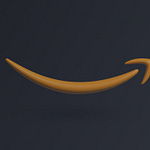Hello 👋 get a brew on because these are the top 3 emerging risks between May 5th, and May 19th, 2025…
Review our report’s terminology here ↗
Our main risk this fortnight is…
1. Economic: Could the U.S. Tank the Global Economy?
In a concerning echo of 2011, a growing number of economists and political analysts now warn that the Republican-led Congress, under Donald Trump’s potential second term, may again threaten to block efforts to raise the U.S. debt ceiling.
The result may be a possible default on U.S. government debt, an outcome that would shake the global economy, devalue the U.S. dollar, and send international markets into turmoil. The Atlantic warns this isn’t hypothetical, it’s a tactic we’ve seen before.
What’s different now is the context:
The U.S. is carrying more debt than ever.
Global economies are still fragile from the aftershocks of COVID, inflation, and regional wars.
And the credibility of U.S. institutions is at a low point.
What to do now:
Run a scenario exercise simulating a U.S. debt ceiling crisis. Assess how funding freezes or currency fluctuations might impact your operations.
Stress-test financial reserves and cash flow buffers against delayed payments, increased borrowing costs, or trade shocks.
Watch U.S. congressional developments closely through July–September 2025, when the budget battle is expected to heat up.
Sources
You should be concerned if…
You operate across borders and rely on U.S. trade, investment, or funding pipelines.
You work in finance, export, or currency-sensitive sectors and haven’t modeled market shocks.
You’re a founder or executive whose strategic plans assume stable U.S. economic policy.
These items are generic assumptions. We recommend considering your own unique risk landscape against your critical dependencies. If you don’t know what they are, get in touch.
Preventative actions
Run a debt crisis scenario.
Model what a U.S. default or government shutdown could do to your funding, trade, and operations.
Audit financial contingency plans.
Identify areas where access to credit, investment, or U.S. services might be at risk.
Strengthen local and regional supplier networks
Aim to reduce exposure to global volatility.
Track policy developments.
The U.S. election cycle is not a background event, it's an active business risk.
2. Economic: NZ’s Open Banking plan could stall innovation
New Zealand’s proposed API fee structure allows banks to charge third-party fintech providers up to $5 per user, per bank, per month.
No other major open banking jurisdiction (UK, AU, EU, US) charges for basic data access, making NZ an outlier.
These costs will be passed to consumers and small businesses, potentially stifling fintech innovation and competition.
Critics say it’s a classic case of banks gaming regulation before open banking gains traction.
Sources
3. Technological: Sonos app disaster sparks brand crisis
Sonos rolled out a major app redesign in May 2025 that removed core features and caused major connectivity issues for users.
The app was tested only in lab environments, failing to account for the complexity of real home networks.
Customer backlash was swift—ratings plummeted, influencers posted teardown videos, and Sonos’ CEO stepped down.
The incident highlights how software updates can become high-risk events, especially when core functionality is disrupted.
Sources
Want to discuss how these risks might effect your business?
Book 30 minutes with us, free ↗
Need support?
At Fixinc, we are passionate about helping people get through disasters. That’s why our team of Advisors bring you this resource free of charge. If you need help understanding these threats and building a plan against them, the same Advisors are here to help over a 30-minute online call. Once complete, if you like what was provided, you can choose to provide a donation or subscribe to Unreasonable Ventures to support this channel.

















